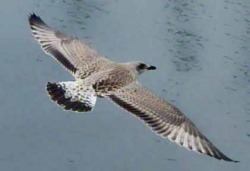Research
A review of the available research indicates that considerable interest has been shown in the world of science education over the years concerning individuals’ knowledge and concepts about the weather, especially those of children.
It has become widely accepted that children develop ideas and beliefs
about the natural world long before they are formally taught, and the
importance of these conceptions for learning has been recognized by
many researchers. (Driver & Oldham, 1986, p. 105)
Some of this research has focused on common misconceptions that children have and how children develop them. Although there appears to have been little research done in the past on adult misconceptions, the recent and highly topical importance of climate-change issues has focused attention on the percieved lack of "climate literacy" of adults which results in common misconceptions about weather and climate (Dupigny-Giroux, 2008, p. 484). The topic of the weather plays a large part in many daily conversations. People show great interest in the weather forecasts and conditions in their own area every day and often inquire about conditions elsewhere. Extreme weather becomes a focus of national and international news. Polito, Tanner and Monteverdi (2008) state that meteorological content is weaved throughout K-12 educational standards and curricula, and in general education (GE) courses at the college level. Yet, although people concentrate on weather conditions, they may have minimal understanding of the causes of these conditions relating to weather, and more specifically wind.
The prevailing theme we have found in our reference searches has been the apparent wealth of misconceptions that arise in both children and adults through each individual’s prior learning, either formally in school or through their everyday interaction with the physical world. The main theme that runs through the literature is the shift over the years from the belief that these misconceptions should be interpreted as a lack of scientific knowledge to one where they are being suggested as useful indicators of thought processes and concept development. This reflects the general shift in pedagogical approches over time. Smith, diSessa and Roschelle (1994), amongst others, suggest that misconceptions can be seen as part of a normal process as the individual builds on their prior understanding to ‘refine and reorganize’ prior understanding rather than replacing it.
It has proved difficult to find many research articles that focus solely on concepts of weather and fewer still that cover the element of wind. One research paper which applied closely to our research question and interview method was conducted by Stepans and Keun (1985). They recorded audio interviews with children aged between 7 and 11 and categorized their responses to questions about weather concepts such as clouds, lightning, thunder, snow and wind. Very few students’ responses could be categorised as scientific and there was a significant difference between the younger (grade 2) and older (grade 5) students in that most grade 2 students gave religious explanations for weather phenomena.
As this project is taking place in England we decided to look at the United Kingdom educational standards to ascertain when certain weather concepts, specifically wind, were expected to be taught. By looking at the Department for Education and Skills (DfES) web site it is possible to see that the concept of wind is introduced at the Key Stage 1 level (5 – 7 years) in the science unit What causes movement?. The standards state that children at this age should learn that it is not only ourselves that make things move and should question what is causing movement. Children are encouraged to look at things moving in the wind such as trees, lines of washing, bubbles, or toy windmills and speculate on what is causing them to move. The outcome is that the children should identify the cause of motion as the wind making the branches move. Interestingly, the site itself points out that at this age some children may think that the trees make the wind by moving their branches.
Although environmental studies form part of the main science syllabus at key stage 2 and 3 (7 – 14 years old), there appears to be no specific mention of either wind, weather or climate. With this information, and some informal questioning of peers and others, we questioned whether many of the people we interviewed, whatever their age, would be able to give us a truly scientific explanation for the cause of the wind.
References
DfES UK. (n.d.). The Standards Site: What causes movement? Schemes of Work: Science at Key Stages 1 and 2. Retrieved July 19, 2009, from http://www.standards.dfes.gov.uk/schemes2/science/sci1e/sci1eq5?view=get.
Driver, R., & Oldham, V. (1986). A Constructivist Approach to Curriculum Development in Science. Studies in Science Education, 13(1), 105 - 122. doi: 10.1080/03057268608559933.
Dupigny-Giroux, L. (2008). Introduction - Climate Literacy: A State of the Knowledge Overview. Physical Geography, 29(6), 483-486. doi: 10.2747/0272-3646.29.6.483.
John P. Smith, diSessa, A. A., & Roschelle, J. (1993). Misconceptions Reconceived: A Constructivist Analysis of Knowledge in Transition. The Journal of Learning Sciences, 3(2), 115 - 163.
Polito, E., Tanner, K. D., & Monteverdi, J. P. (2008). Assessing Middle School and College Students' Conceptions about Tornadoes and Other Weather Phenomena (pp. P7.2 1-4). The Hilton DeSoto Hotel in Savannah, GA. Retrieved July 14, 2009, from http://tornado.sfsu.edu/Activities/SLS_Conference_2008/PolitoDocs/extendab_ejp.pdf.
Stepans, J., & Kuehn, C. (1985). What Research Says: Children's Conceptions of Weather. Science and Children, 23(1), 44 - 47 .
Driver, R., & Oldham, V. (1986). A Constructivist Approach to Curriculum Development in Science. Studies in Science Education, 13(1), 105 - 122. doi: 10.1080/03057268608559933.
Dupigny-Giroux, L. (2008). Introduction - Climate Literacy: A State of the Knowledge Overview. Physical Geography, 29(6), 483-486. doi: 10.2747/0272-3646.29.6.483.
John P. Smith, diSessa, A. A., & Roschelle, J. (1993). Misconceptions Reconceived: A Constructivist Analysis of Knowledge in Transition. The Journal of Learning Sciences, 3(2), 115 - 163.
Polito, E., Tanner, K. D., & Monteverdi, J. P. (2008). Assessing Middle School and College Students' Conceptions about Tornadoes and Other Weather Phenomena (pp. P7.2 1-4). The Hilton DeSoto Hotel in Savannah, GA. Retrieved July 14, 2009, from http://tornado.sfsu.edu/Activities/SLS_Conference_2008/PolitoDocs/extendab_ejp.pdf.
Stepans, J., & Kuehn, C. (1985). What Research Says: Children's Conceptions of Weather. Science and Children, 23(1), 44 - 47 .
© Copyright 2009 Free Thinkers. All Rights Reserved.


